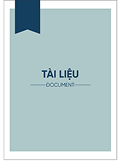Tài liệu
Does financial system development, capital formation and economic growth induces trade diversification?

Xem mô tả
154
Xem & Tải
1
Tóm tắt
Purpose – The purpose of this study is to investigate long-run and short-run relationships between trade diversification, financial system development, capital formation and economic growth. Design/methodology/approach – ARDL estimation approach is applied to analyze long-run and short-run relationships between the financial system development, capital formation, economic growth and trade diversification in case of the Sultanate of Oman over the period 39 years starting from 1979 till 2017. Findings – The results show that financial system development and economic growth has a positive impact on trade diversification in the short-run and long-run. However, capital formation has a negative impact on trade diversification in the short run and long run. The negative relationship between trade diversification and capital formation implies that over the period of study, the investment in capital goods was made to enhance the production capacity of the oil sector to maximize revenue. Research limitations/implications – This research is limited to analyze long-run and short-run relationship between the financial system development, capital formation and economic growth and trade diversification in case of Sultanate of Oman. Practical implications – To achieve the diversification goal, the policymakers need to formulate policies to strengthen the financial system and invest in infrastructure development to promote the non-oil sector. The research findings of this study will provide insights to the policymakers to formulate an effective diversification policy. Originality/value – This research contributes to the existing literature by providing empirical evidence of the short-run and long-run analysis of the selected variables in the context of an oil-dependent country.
Mô tả
Financial
Tác giả
Sohail Amjed
Iqtidar Ali Shah
Người hướng dẫn
Nơi xuất bản
Nhà xuất bản
Kinh Tế Quốc Dân
Năm xuất bản
2021
ISBN
1992-0020
ISSN
Từ khóa chủ đề
Trade diversification , Capital formation , Economic growth , Financial system development , Oil dependence
Trích dẫn
Bộ sưu tập
Tệp tin

10-1108_JED-06-2020-0073.pdf
D:\NEU_DSpace\tapchitienganh
Dung lượng: 209.05 KBĐịnh dạng: pdf
Lượt xem: 0 Lượt tải: 1
